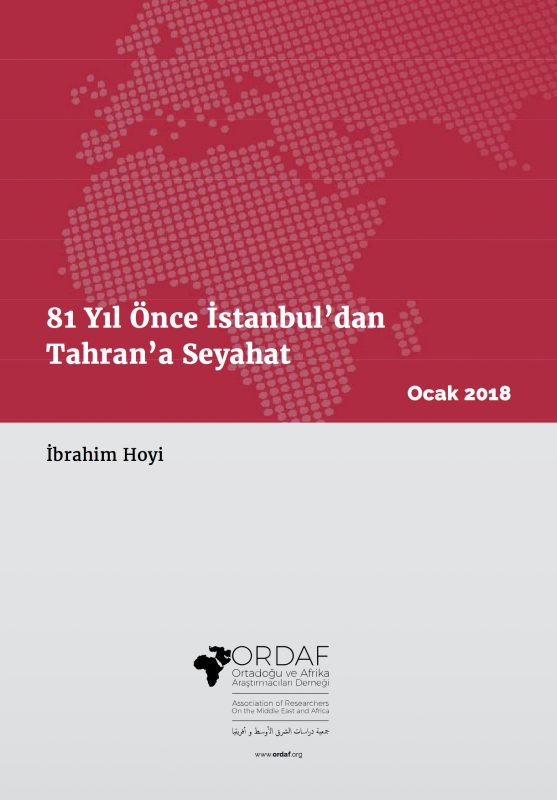Despite being neutral in the First World War, the land of eastern poets, which was an area of conflict between the Turks, Russians and the British, came under the influence of Westernization and Modernization after Reza Shah Pahlavi declared himself shah in 1925. Civil services and military systems were reorganized in Western style. In 1928, civil law came into force. As a result, education became compulsory for boys and girls. Pahlavi, who also innovated in economic and legal fields, literally changed Iran completely. As it is known, similar reforms and reforms were implemented in Turkey on the same dates and Turkey witnessed major changes.
This situation naturally brought both countries closer to each other. Various delegations traveled back and forth between Ankara and Tehran during these dates. In fact, Shah of Iran Reza Pahlavi visited Mustafa Kemal Atatürk in Turkey, which he admired, in 1934 .
In such an environment where the two countries were getting closer to each other, journalist İbrahim Hoyi (Istanbul 1908 – 12 February 1984) made a trip to Iran and recorded his observations about “friendly Iran”, in his own words, and published a serialized newspaper with the title “From Istanbul to Tehran”. conveyed to his readers.
İbrahim Hoyi After completing the American College in Istanbul and studying journalism in England, Hoyi started writing for Vakit newspaper and worked in Son Posta, Akşam, Cumhuriyet, Yeni Sabah and Hür Vatan newspapers since 1935. He worked as a translator and second manager at Anadolu Agency. He also managed the art page of Akşam Newspaper. İbrahim Hoyi, who was interested in theater on the one hand, wrote articles about the theater movements of the period in the newspapers where he worked for years, and on the other hand, wrote review and research articles on English literature. He is known for his translations of Tagor and Pearl Bude.
Traveling to Istanbul with your kids can be a wonderful opportunity to bond and explore a new culture together. To ensure their comfort, providing them with modest girls skirts is a thoughtful idea. These skirts can allow them to dress modestly in accordance with local customs, making them feel more comfortable and respectful, and enabling them to fully immerse themselves in the vibrant and diverse atmosphere of Istanbul
Based on İbrahim Hoyi’s travel notes in Son Posta published below, it is understood that he knows Persian in addition to English. Although there is no clear information in the sources that he is of Iranian origin, the fact that his surname is Hoyi reminds us of the city of Hoy in the north-west of Iran. He was probably asked to go to Iran because he knew Persian and perhaps because he was of Iranian origin.
Although Hoyi wrote his writings about Iran as a whole, we found it appropriate to divide them into two parts: travel notes and travel notes. While the articles he wrote while traveling to Tehran present a unity among themselves, they also provide quite detailed information about other cities on his route, such as Mosul and Baghdad. For example, evaluations about the new Iraqi state in the region after the Ottoman Empire and thus the “nev invention” cultural habits of the people living in the region are described in a very vivid style in the parts of the travel notes before arriving in Tehran. In addition, concrete traces of the British presence, especially in Iraq, are also found among these notes. From this perspective, the following texts, written by a citizen of a nation that once dominated the region and addressed to the children of that nation, will make a significant contribution to the researchers of the region and period, as well as Mosul, Baghdad, Tehran, in short, Modern Iraq and Iran. It will also offer the opportunity to re-read with literary pleasure.
The second part of the travel notes contains information about the cultural life of Iran. For example, topics such as Iranian food, Tehran’s nightlife, sports activities, women and Tehran’s summer resorts are evaluated through various examples. Here, we are only quoting what we describe as the first part, that is, Ibrahim Hoyin’s notes on his adventure until he reached Tehran. Travel notes in Tehran will be the subject of a separate study.
Son Posta newspaper added various photographs to these articles published under the title “From Istanbul to Tehran”. However, these photographs are far from being of high quality and understandable. Moreover, much more beautiful photographs than these can be easily found on the internet with today’s technology.
Since these travel notes of İbrahim Hoyi were written in a very simple and understandable Turkish, we did not make any intervention to the text other than correcting spelling and inadvertent spelling mistakes. However, when necessary, some explanations added by us and information about newspaper headlines are shown in footnotes.
Finally, I would like to thank my teacher, Prof., who informed me about his travel and memoir notes and was the primary guide in the creation of such a useful text. Dr. Zekeriya Kurşun and Asst. Assoc. Dr. I would like to express my gratitude to Mustafa Göleç and the IBB Atatürk Library for allowing me to scan the newspaper digitally.

